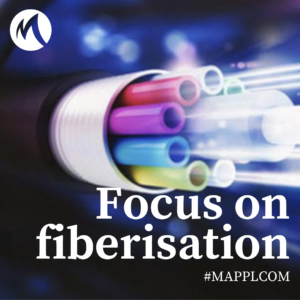The beginning of the end of mobile data commoditization era is near: experts talk about 2021!

There’s no doubt that almost all international telecom players were performing some crucial strategic campaigns and programs focused mainly on digital transformation when the whole world was collapsed with the COVID-19 pandemic state. These digitalization processes were mainly triggered by the growing expectations of customers, as well as the fact that technologies are becoming both more affordable and wider in terms of the choice available. To meet complex expectations of the end-users and win the competition for becoming a proved market leader, all the players set a goal of performing the changes as soon as possible. Since the situation has changed drastically with the arrival of the first lockdown measures, the focus within the transformation process has also shifted from achieving superiority among the other players to a simple survival, as well as helping to survive numerous companies which got in the trouble (hint: almost all the companies) due to lack of flexibility in the face of distant employment, distant control and all the other distant things. So, pretty obviously, the priorities were forced to change and digital transformation has unpredictably become a concern of the humanity, not some single global telcos.
Being a severe task for small companies due to huge budgets needed and potential lack of capabilities within the own team, it turns out to be even more harsh for the giants which constantly prove to be inflexible and unconsciously resistant to any changes.
In the recent industrial survey major operators’ representative answered several questions concerning the burdens they’ve come through, while being on the transformation path, and their expectation from the further changes the market is about to encounter. Surprisingly enough, slightly more than half of respondents admitted their transformation programs had no impact from the pandemic state and their budgets remained the same. Even more unpredictable was that 1/5 of respondents even increased their investments in this kind of programs. What’s more, around 44% or representatives still report experiencing impact of the pandemic overall. This is explained by the fact that some decision makers increased spendings on digitalization either because it was an urgent need (to survive) or they truly believed it was the best time to hurry up and become the first-mover.
Respondents were also asked if they expect the data to become a commodity. Overwhelming majority of 88% percent believes it would be here within the period of up to 4 years (with 50% saying it is already here!). Another promising (both technically and financially) area they were asked about is the application of premium QoS and related embedded services at private places like homes and residences. And here most of the respondents clearly see a commercial potential and believe the customers are going to be charged for a host of innovative business and security applications.
Finally, the authors were interested in professional opinion, whether the 5G networks are going to become a solid channel for delivery of such apps by some service companies. And here their expectations were supported by the respondents again: they also forecast this.
Generally, in spite of all the destructive consequences of the pandemic state, major telecom players don’t lose their optimism and find the drastic changes in demand to be a powerful driver to upgrade transformation programs and accelerate higher ROI for investments.

